
Säntis Singel Malt
For the photo gallery, click here
Appenzell in the rural canton of Appenzell, is well known for its spicy-herb Appenzeller cheese, dog breed, and at the Swiss level, for its biberli (a spiced-bread with almond filling), bitter alp liquor (Appenzeller) and dried meat (Mostbröckli). The village of Appenzell is also known as far as Taiwan or Australia for its single malt, the Säntis, the name of the most famous mountain in Appenzell.
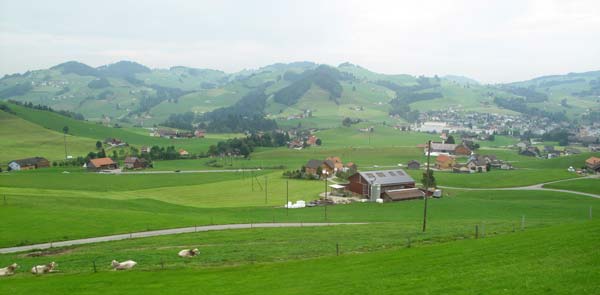 |
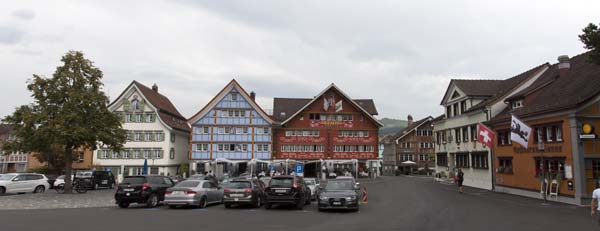 |
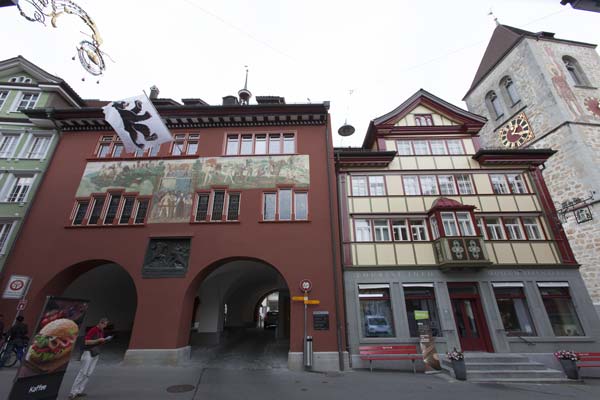 |
| Some views from the village of Appenzell |
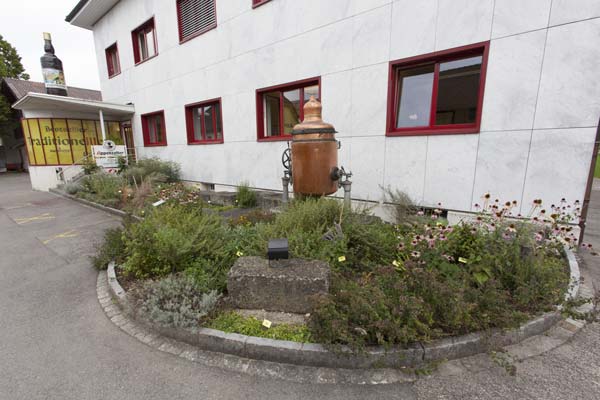 |
| The Appenzeller Alpen bitter distillery, another known alcoholic product of Appenzell, with the garder containing herbs used for the preparation of the Alpen bitter |
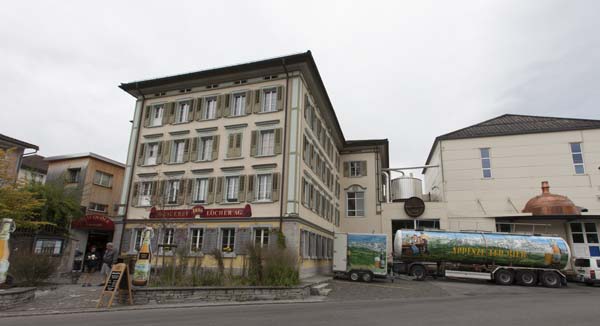 |
| The Appenzell brewery, home of the Säntis Single Malt Distillery |
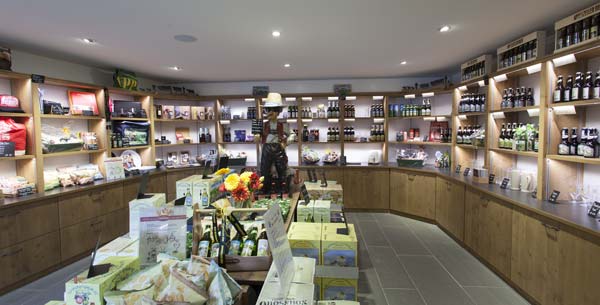 |
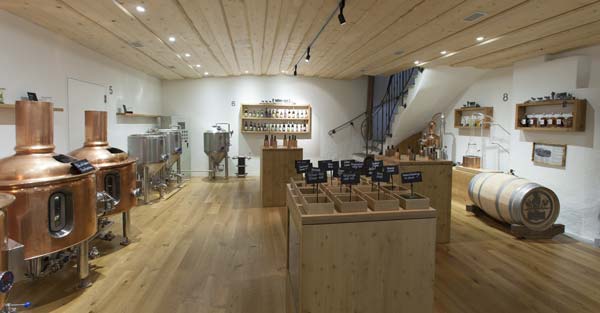 |
| The visitor centre, with the beer part (middle) and the single one (bottom) |
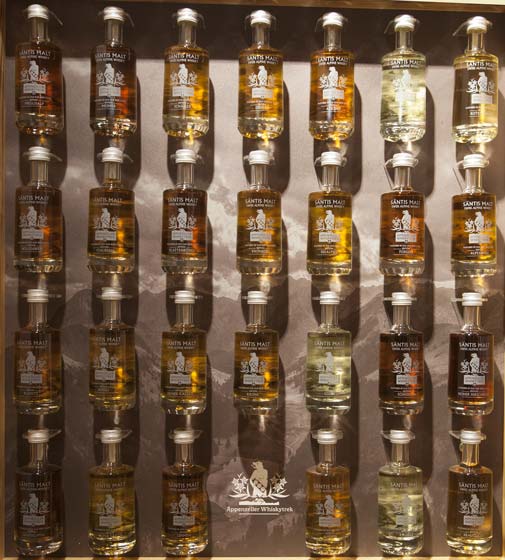 |
| The Appenzeller whisky trek, a trek with 9 or 26 posts in the canton of Appenzell, whith each post containing an unique cask of Säntis |
The Family Locher, owner of the brewery Appenzell since 1886, started the production of Whisky in 1999, following the revocation of the Swiss federal law forbidding the distillation of spirits from grain (cereals). They were amongst the first ones to distil whisky. The philosophy was rather simple: since they were producing a good bere, they were going to use their beer as the wash for the whisky making. Distillation takes place in a 450 L Holstein copper still in the brewery. A second still will be installed soon. Mashing and distillation takes place in the brewery in Appenzell. The final distillate is then matured in ex-bier casks. It is probably the only distillery in the world to have its maturation taking place exclusively in ex-bier casks, aged of up to 130 years. The whisky is typically matured for 5-6 years before being bottled, while older casks might be bottled as single cask for the export markets. The particularity of the beer oak cask is that they are small (around 105-110 L capacity), and with very thick staves, in order to resist to the pressure of the CO2 from the beer. Since 2003, they have prioritised the purchase of Swiss barely grown in the alpine regions. While beer casks are used for maturation, various wine and spirit casks can be used for final distillation.
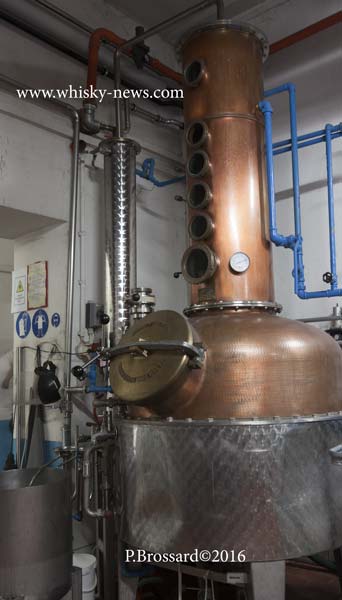 |
| The Holstein still where the Säntis single malt is distilled |
Säntis malt is not only sold in Switzerland in the supermarkets such as Globus or Coop, but exported, as well. The two main clients are Germany and Taiwan.
Each winter, a snow-white edition is bottled as a limited outturn of 2000 bottles. They are finish in schnapps (eau-de-vie). This year edition will be finish in ex-pear casks. The edition Sigel is the standard bottling, matured in ex-beer casks, while the Himmelberg edition contains a proportion of Säntis single malts, with a final maturation in ex-wine casks (e.g., pinot noir). The Dreifaltigkeit (Trinity) is bottled at a high strength (52%) and contain some peated malt. While all the peatbogs of Switzerland are classified as a nature reserve, and thus, peat harvest forbidden for commercial use, Säntis obtains its Swiss peat from Appenzell, via a museum, which is allowed to cut peat for demonstration purposes for the tourist. This peat is then used to smoke the barley for 48h in a small kiln.
During my visit, I had the opportunity of tasting a couple of whiskies straight from the cask and distilled in 2011, as well as some older expression, including one finished in ex-bourbon casks stored in the “vault”, a bunker located at the basement of the distillery. In addition to the “vault”, casks are stored in several other locations and warehouses. To come back to the whisky, I was impressed by the maturity and complexity of the whisky. A whisky worth tasting.
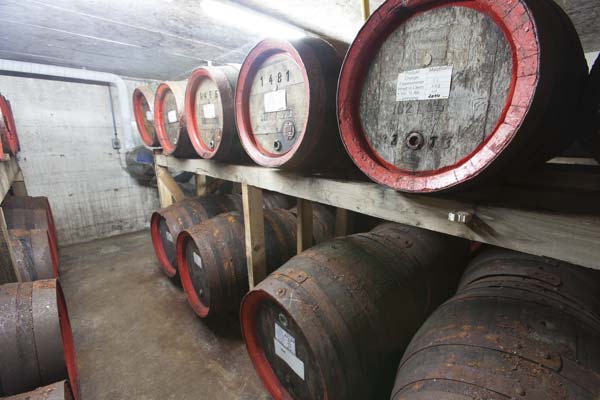 |
| The "vault" warehouse in a bunker below the distillery with its typical beer casks |
All samples showed a remarkable smoothness, maltiness and maturation. The spices were varied and reminded me strongly of the spices present in the Appenzeller biberli that you can find in the village centre.
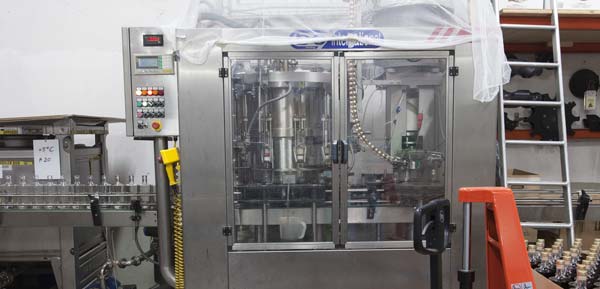 |
| The bottling hall for the Säntis Single Malt |
As the distillery is located as part of the brewery, the distillery visit is not opened to the public. Only the nice brewery and whisky shop are. However, as the beer production has increased of 3-4x over the last year, with the launch of a high number of craft beers, the Appenzell brewery will be converted as a craft brewery allowing beer visits, while the mainstream beer brands are produced in a second brewery located at proximity of Appenzell.
Thank you Detlef and Aurèle for the visit.
Patrick Brossard, 16 September 2016.